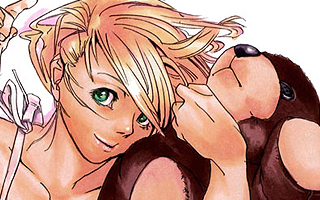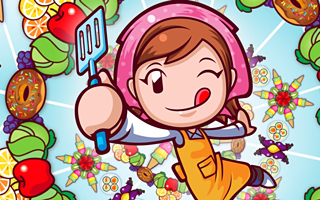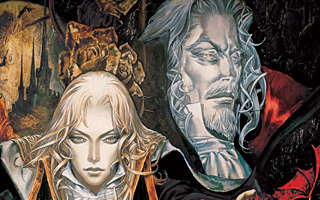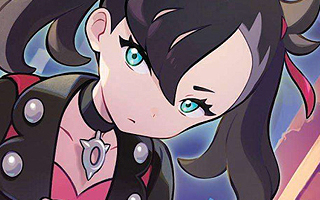PlayStation Classic Omissions
Top 10 Games Not on the PlayStation Classic Edition!
With the release of the PlayStation Classic, Sony has followed in the footsteps of the wildly successful NES and SNES Classic systems. Sony’s miniaturized system comes pre-loaded with 20 games and a pair of replica PlayStation controllers, and its offerings include generation-defining titles like Final Fantasy VII and Metal Gear Solid. I’d be lying if I said I was completely satisfied with all of the games that were chosen, however. It’s impossible to please everyone when you’re limited to a library of 20 games, but there were literally hundreds of games that I’d choose over Rainbow Six, for example. (Nearly half of the included games are based on the vastly inferior PAL versions, but that’s another issue altogether.) The PlayStation is one of my favorite systems of all time, so I thought I’d take a look at the games I think should have been included on the PlayStation Classic. We’ve already made a list of best PlayStation games, so the games on this list won’t necessarily be listed in terms of greatness. Instead, the games will be ranked in terms of how well they represent the PlayStation era and how glaring their omissions were.
10
Spyro the Dragon
1998

With games like Ratchet & Clank and Spider-man to their name, Insomniac Games has developed many of Sony’s most significant titles over the years. Few third-party companies have a stronger relationship with Sony than Insomniac does, so I think it would have been appropriate to revisit the first game they worked on together. Spyro the Dragon is an ambitious game that pushed the limits of the PlayStation hardware. The game used an innovative 3D panoramic engine that allowed for expansive levels that could load efficiently without putting too much strain on the hardware. These dynamic rendering techniques made Spyro one of the most impressive 3D platformers of its day, and the game was the closest thing PlayStation fans had to their own Super Mario 64. It took a while for the game to find a following, but it went on to sell over five million copies and spawned two sequels on the PlayStation. I understand why Ape Escape wasn’t included on the PlayStation Classic – it couldn’t be played with the standard PlayStation controller, after all – but Spyro would have been an excellent choice to represent the platforming contingent in its absence. A remastered version of the game was recently included on Spyro Reignited Trilogy, but I’d rather play the original version.
9
Tony Hawk’s Pro Skater 2
2000

The 1990s was the most extreme decade ever, and Tony Hawk would have been a better choice to represent this era than Cool Boarders 2. Tony Hawk’s Pro Skater 2 featured the same open-ended gameplay that its predecessor was known for, and it still centered around professional skateboarders completing various missions to earn cash prizes. The sequel built upon the original in several ways, and introduced many features that would become staples in the series. The “Create-a-Skater” and “Create-a-Park” modes, for example, were first-seen in Tony Hawk 2. The game introduced several new tricks – including the noseslide, tailslide, bluntslide, noseblunt, feeble, and overcrook grinds – but the most significant addition was the inclusion of the manual technique. This maneuver effectively enabled players to string various tricks together and form a near-infinite number of combos. Naturally, this new dynamic contributed greatly to the game’s replay value. The first Tony Hawk was well-received, but the sequel caught everyone off guard. In the wake of its release, seemingly everyone and their grandmother hailed Tony Hawk’s Pro Skater 2 as one of the greatest games of all time. It received perfect scores from several gaming outlets and was honored with countless “Game of the Year” awards. Activision eventually ran the series into the ground and basically made the Tony Hawk franchise irrelevant, but they stuck the landing with their second attempt.
8
Crash Bandicoot: Warped
1998

On the surface, Crash Bandicoot seemed like a desperate attempt to mimic the success of Sonic the Hedgehog. The game was a technical marvel, however, and it made excellent use of the PlayStation hardware. The detailed textures and responsive controls made the game stand out in the sea of uninspired platformers, and Crash himself had a Looney Tunes quality that set him apart from other mascots who seemed to be stuck in their “too cool for school-ness.” Crash Bandicoot: Warped was the third entry in the series, and it’s the one I had the most fun with. It builds nicely on the foundation set by the earlier games, but it introduces enough new ideas to keep things interesting. The time travel theme contributes to more variety in the levels, while the new time trial mode adds tremendous replay value. There are also several animals and vehicles to ride on, and countless relics to find throughout the game. Despite impressive sales, Sony viewed the franchise as disposable. The Crash Bandicoot N. Sane Trilogy was eventually released on various platforms, but it’s still a miscarriage of justice for Crash Bandicoot to be missing in action on the PlayStation Classic. Nintendo and Sega wouldn’t neglect Mario or Sonic in this fashion! Remarkably, it’s not even my most-wanted Crash game on this list.
7
Tomb Raider II
1997

The Tomb Raider series had a narrative inspired by Indiana Jones and a leading character inspired by the dreams of teenage boys. In other words, it was the perfect product for its time. The first Tomb Raider was a revolutionary title and one of the first examples of a great 3D adventure game. The sequel was one of the most highly-anticipated games of 1997, and Lara Croft had become an industry icon after her first adventure. As innovative as the first game was, the sequel improved upon it in many ways. The addition of vehicles and real-time lighting effects added more depth to the stages, and the levels themselves were a lot more interesting. From the watery streets of Venice to snow-covered Tibetan foothills, each stage felt different from the one the preceded it. The massive areas were filled to the brim with secret passageways, and you never knew what you’d find around any given corner. Even the training area was fun to explore. I’ll concede that the game feels archaic by today’s standards. The grid-based movement feels rigid, the block puzzles are tedious, and the lack of a proper aiming system makes shooting enemies a real chore. Still, for a game that does so many things wrong to make this list speaks volumes about what it does right. Those who can look past its obvious flaws will find a monumental adventure in Tomb Raider II.
6
Gran Turismo
1998

With over 140 licensed cars, Gran Turismo set the bar for every racing game that followed. The models were meticulously detailed, and a lot of work went into making sure the cars would drive like their real-world counterparts. The game also gave players the opportunity to purchase new vehicles and parts, and everything from the suspension to the gear ratios could be modified. Gran Turismo was as much a driving simulation as it was a racing game, and even the “arcade mode” was more demanding than your typical racer. Instead of just pinning down the gas button and trying to reach the finish line, players had to be mindful of things like weight transfer and engine placement. The game was so deep that it required players to pass several strict license tests before they could start racing. Two player support, an awesome replay feature, and an energetic soundtrack rounded out the most influential racing game of the ’90s. Gran Turismo 2 featured four times as many vehicles, twice as many tracks, and a new rally mode. Even though the sequel has more content, I’m acknowledging the first Gran Turismo for its historical importance. Gran Turismo was the single best-selling game on the original PlayStation. You can’t make a proper compilation for any system without including its best-selling game. Between the vehicles and the soundtrack, the game makes extensive use of licensed content. I understand why the game wasn’t included, but it’s a glaring omission nonetheless.
5
Crash Team Racing
1999

There are many racing games that probably should have been included on the PlayStation, and I feel that Gran Turismo and WipEout defined the system as much as Ridge Racer did. Those franchises were unlikely candidates for the PlayStation Classic due to their extensive use of licensed music, but I see no reason why Crash Team Racing couldn’t have made the cut. It’s especially disheartening since the game wasn’t included on the recently-released N. Sane Trilogy compilation either. I wouldn’t necessarily describe Crash Team Racing as the best game developed by Naughty Dog, but it just might be the most fun. The game borrowed heavily from Mario Kart 64 and Diddy Kong Racing, but it ran smoother than either game and the pacing of the races felt more akin to the original Super Mario Kart in some regards. The folks at Naughty Dog obviously did their homework before releasing the game, and it’s easily the best kart racer to ever appear on a Sony platform. It also happens to be one of the most impressive PlayStation games from a technical standpoint, and I was especially impressed by how well the game ran in split-screen. (The four-player mode probably wouldn’t work on the PlayStation Classic, but that’s no reason to disregard the game entirely.) There aren’t many games on the PlayStation Classic that truly show what the console was capable of.
4
PaRappa the Rapper
1997

I know licensing issues can be complicated, and I can understand why some of the games on this list were not included on the PlayStation Classic. What I don’t understand, however, is why Sony would choose to forsake one of their own franchises! PaRappa the Rapper is an innovative music game that follows the exploits of a rapping dog during his quest to win the heart of a sunflower named Sunny. The bizarre game helped launch an entire genre of music and rhythm games, and its influence can be seen in everything from Guitar Hero to Elite Beat Agents. PaRappa features several catchy songs that will likely stay in your head forever, and the soundtrack is supported by an unforgettable (albeit ridiculous) storyline. As you progress through the game you will be introduced to a slew of intriguing characters as our hip-hop hero raps his way through karate lessons, driving school, and a cooking show. Perhaps the most interesting stage has PaRappa rapping his way up through a restroom queue to avoid shitting his pants. Needless to say, I’ve never seen a game incorporate diarrhea into its storyline so perfectly. If you don’t love this game, you have no soul.
3
Chrono Cross
2000

Everyone recognized Chrono Trigger as a glaring omission on the SNES Classic, and it’s unfortunate that the sequel was given a similar treatment. The PlayStation was home to dozens of notable RPGs, and the console deserves tremendous credit for popularizing the genre in the west. I was happy Final Fantasy VII and Wild ARMs were included on the PlayStation Classic, but there were a lot of significant titles that got overlooked. Sony found room for three puzzle games, so I don’t think its out of line to expect a few more RPGs given how important they were to the platform. Games like Suikoden II, Dragon Quest VII, and Parasite Eve would have been welcome additions, but Chrono Cross would have been the most appropriate choice. Unlike the other RPGs I listed, Chrono Cross was never given a sequel. Many of the people reading this weren’t even alive when the game was released! The PlayStation Classic could have introduced a new generation of fans to a series that deserves another shot at life. Another reason why Chrono Cross would have been a good fit for the console is because of how accessible it is. There are no random battles and you aren’t forced to grind for experience, so players will spend most of their time recruiting new party members and exploring the vibrant world around them. RPGs are polarizing as a genre, but Chrono Cross is an easy game to jump into despite its complex narrative structure.
2
Tomba!
1998

Tokuro Fujiwara is one of the most important game designers of all time, and Tomba! is one of his greatest achievements. For the uninitiated, Tomba! is a colorful adventure game that feels like a more whimsical take on the Metroidvania genre. The gameplay is remarkably open-ended, and players are given dozens of quests to complete during the adventure. The game’s expansive world is packed with personality, and its classic side-scrolling mechanics hold up better than most of the experimental 3D platformers from the era do. Tomba! 2 was released way back in 1999, and our favorite pink-haired wildman has been missing in action ever since. There were no HD remasters or enhanced remakes, and poor Tomba couldn’t even score an invite to PlayStation All-Stars Battle Royale. It’s rather unfortunate, and the franchise was a real missed opportunity on Sony’s part. It’s my contention that Tomba! is the single most underrated Sony-published franchise, and its omission from the PlayStation Classic only serves to reinforce this perspective.
1
Castlevania: Symphony of the Night
1997

Castlevania: Symphony of the Night was recognized on this website as the greatest PlayStation game of all time, and I still hold this opinion. I’ve been a fan of the series from the very beginning, and I’m comfortable in describing it as the single best Castlevania game ever created. The game featured the best 2D graphics on the PlayStation and one of the best soundtracks on any system. It also featured ingenious stage layouts, creative boss battles, and one of the coolest mid-game Easter Eggs in the history of the medium. I enjoyed the Castlevania games on the GameBoy Advance and the Nintendo DS, but it’s criminal that we’ve never seen another high-profile 2D Castlevania designed for a proper home console. The 3D Castlevania games simply don’t hold a candle to Symphony of the Night. Part of me understands why the game wasn’t included on the PlayStation Classic. After all, it had recently been re-released as part of the Castlevania Requiem double pack and Sony likely didn’t want to cannibalize sales. Nevertheless, its absence makes the PlayStation Classic feel a little less meaningful.





Do you agree with this list? Let us know what you think by leaving a comment below. Your opinion matters!